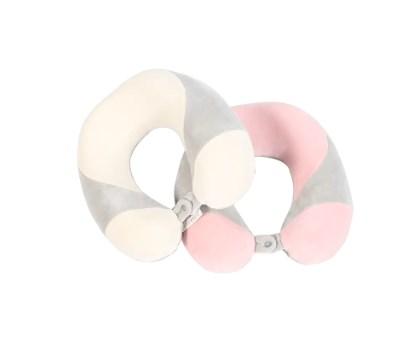The comfort of a memory foam neck pillow is a paramount consideration for individuals who prioritize support and relaxation, especially during travel or rest. However, the question arises: how does the comfort of these pillows vary across different seasons? The answer to this question is crucial for those who seek year-round comfort and are considering investing in a memory foam neck pillow.
Memory foam neck pillows are known for their ability to contour to the shape of the user's neck, providing personalized support. This feature is particularly beneficial as it helps to alleviate pressure points and distribute weight evenly. However, the material's density and the way it responds to temperature changes can affect its comfort in various weather conditions.
In the summer months, when temperatures soar, the concern often shifts to how well a memory foam neck pillow can dissipate heat. Traditional memory foam can retain heat due to its insulating properties, which might make it less comfortable for some users during hot weather. However, many manufacturers have addressed this issue by incorporating open-cell technology or gel-infused memory foam into their products. These innovations allow for better air circulation, thus enhancing the breathability and cooling effect of the memory foam neck pillow.
Conversely, during the colder months, the same insulating properties that can be a disadvantage in summer become an asset. Memory foam neck pillows can provide additional warmth by trapping heat close to the body. This can be particularly beneficial for those who tend to feel cold easily or for individuals using the pillow outdoors in chilly conditions.
The transition seasons, such as spring and autumn, present their own set of challenges. The fluctuating temperatures can make it difficult to find a balance in comfort. Here, the adaptability of memory foam comes into play. High-quality memory foam neck pillows can adjust to the changing temperatures, maintaining their support and comfort levels without becoming too firm or too soft.
It's also worth noting that the outer cover of a memory foam neck pillow can significantly impact its comfort in different seasons. Removable and washable covers made from breathable materials like cotton or bamboo can enhance the pillow's comfort by allowing for better air circulation. Additionally, having the option to remove the cover for washing can help keep the pillow fresh and hygienic throughout the year.
In conclusion, the comfort of a memory foam neck pillow across various seasons is influenced by several factors, including the pillow's material composition, the design of its cover, and the user's personal preferences. While memory foam has a reputation for being less breathable in warm weather, advancements in technology have led to the development of more temperature-neutral and breathable options. Similarly, the insulating properties that might be a drawback in summer can provide welcomed warmth in the winter months. Ultimately, the key to year-round comfort with a memory foam neck pillow lies in selecting a high-quality product that offers the right balance of support, breathability, and temperature regulation.



